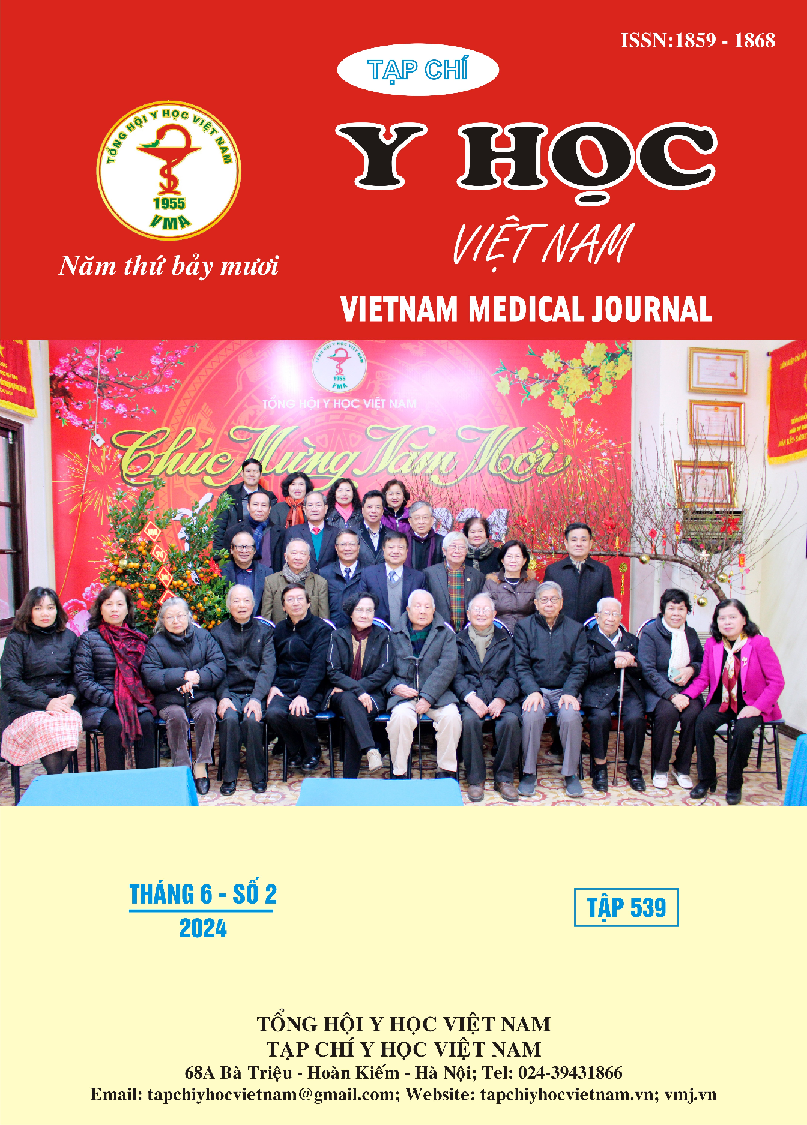OSSIFICATION OF ANTERIOR LONGITUDINAL LIGAMENT CAUSING DYSPHAGIA WITH CERVICAL HERNIATED DISK: CASE REPORT AND REVIEW LITERATURE
Main Article Content
Abstract
Background: Ossification of the anterior longitudinal ligament (OALL) of the cervical spine is not a common and rarely symptomatic, then have not much notice and report in literature. Disease common in men in their sixth or seventh decades of life and can cause dysphagia, dyspnoea, and dysphonia. Case presentation: A 61-year-old male presented with progressive dysphagia in nearly one year. He underwent many treatment in many speciality but have not improve. Recently, he began feel progressive pain and paralyse in neck, both shoulders, arms and hands. Conservative treatment was no relief. He was examined in our institution. He was diagnosed cervical multilevel herniated disk, ossification of the anterior longitudinal ligement C3-C7. The OALL was partial removed from C3 extended to C5 as more pathology was found intraoperatively, artificial disk replace surgery at C3-4, C4-5. Postoperatively, the patient’s dysphagia resolved immediately, reduce pain and numbness in both shoulders, restore good movement of both hands and fingers. Disscussion and conclusion: Ossification of the anterior longitudinal ligament is rarely symptomatic and the rate of surgical intervention is low. The main symptom is difficulty swallowing. Local and limited excision of the calcified longitudinal ligament is recommended before symptoms appear. The thickness and morphology of the calcified mass on cross-sectional CT have an important role in treatment. Larger studies are needed to determine the optimal surgical option for the treatment of dysphagia due to ossification of the anterior longitudinal ligament
Article Details
Keywords
: Ossification of anterior longitudinal ligament (OALL), dysphagia.
References
2. Resnick D, Shaul SR, Robins JM, “Diffuse idiopathic skeletal hyperostosis (DISH): Forestier's disease with extraspinal manifestations,” Radiology, pp. 513-24, 1975.
3. Alexander von G., Ariel T., Christopher E., et al.,, “Surgical Treatment of Ossifications of the Cervical Anterior Longitudinal Ligament: A Retrospective Cohort Study,” Global Spine Journal, pp. 1-7, 2020.
4. Song J, Mizuno J, Nakagawa H, “Clinical and radio-logical analysis of ossification of the anterior longitudinal ligament causing dysphagia and hoarseness,” Neurosurgery , 58, pp. 913-919, 2006.
5. Yamamoto T, Kabayashi Y, Ogura Y, et al., “Delayed leg paraplegia associated with hyperextension injury in patients with diffuse idiopathy skeletal hyperostosis (DISH): case report and review of the literature,” J Surg Case Rep , 3, pp. 1-4, 2017
6. Katsuhito Y, Hideki M, Satoru D, et al., “Surgical treatment for cervical diffuse idiopathy skeletal hyperostosis as a cause of dysphagia,” Spine Surg Relat Res, 2, 3, pp. 197-201, 2018.
7. Maddala S, Yoshitaka H., Susumu I., et al., “Surgical management of symptomatic ossified anterior longitudinal ligament: A case report,” Surgical Neurology International, Spine, 8, p. 108, 2017.
8. Park M, Kim K, et al.,, “Myelopathy associated with instability consequent to resection of ossification of anterior longitudinal ligament in DISH,” Eur Spine J, Online, 2017


